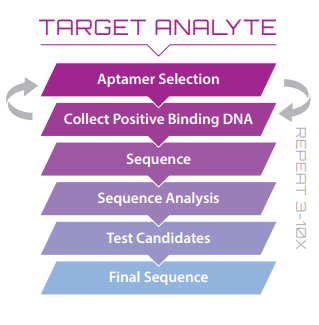
Presenter: Günter Mayer, University of Bonn, Germany
Date: August 27, 2019
Description:
Aptamers are short single-stranded oligonucleotides, selected to interact with target molecules with high affinity and specificity. These characteristics and their versatile applicability, make aptamers universal molecular probes in biotechnological and therapeutic applications. However, the chemical repertoire of the natural nucleobases limits the variety of possible interactions of aptamers with a putative target molecule. Consequently, many desired targets are not addressable by aptamers. This drawback is overcome by broadening the chemical diversity of aptamers, mainly achieved by nucleobase-modifications and the introduction of novel bases or base pairs. I discuss these achievements and the characteristics of the respective modified aptamers, reflected by SOMAmers (slow off-rate modified aptamers), clickmers, and aptamers bearing an expanded genetic alphabet.
//vimeo.com/14528924
Recording of the Webinar: Click Play to View
Presenter Biography

Günter Mayer, University of Bonn, Germany
Prof. Günter Mayer is Professor of Chemical Biology & Chemical Genetics at the University of Bonn, Germany, since 2010 and Director of the Center of Aptamer Research and Development since 2018.
He obtained a MSc in Chemistry (1998) from LMU Munich, Germany, and a PhD in Biochemistry (2001) from the University of Bonn, Germany. He co-founded NascaCell Technologies AG in 2001 but then returned to academia working as group leader/reader at the universities of Bonn and Strathclyde, Glasgow, UK before achieving tenure at Bonn.
His laboratory is focused on answering these questions:
- How can aptamer technology be used to understand biological phenomena?
- How can nucleic acids be exploited as drugs or drug targets to develop novel diagnostic and therapeutic applications?
- What are the underlying principles of nucleic acid evolution in the test tube and how can these be employed to generate novel compounds?






